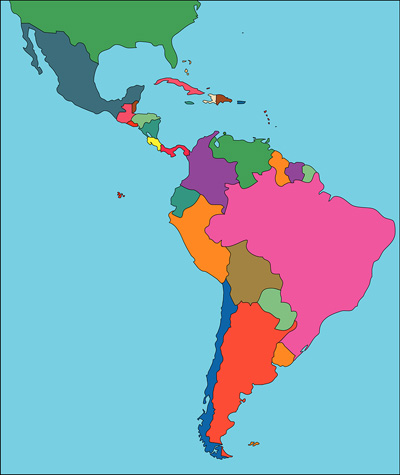|
LatinTLD
President Alfredo Pinochet
was one of the most interesting
speakers at the first edition of THE
Domain Conference in
2015, so when he returned to Fort
Lauderdale for the 2016 edition
of the show last month I took
the opportunity to connect with him
and set up a post-conference
interview about domain investment
opportunities in Latin America.
Santiago,
Chile based LatinTLD, founded in
2007 by Alfredo and Business
Development VP Natalia
Viera (you can read their
bios
here), is a one stop
shop for all things
related to Latin American ccTLDs,
including registration, renewals,
transfers, appraisals, buying,
recovering and various other services.
As
most of your know country code
domains can have wildly
varying nexus requirements, rules
and local peculiarities that can be
very difficult to navigate if you
don't have an insider's knowledge of
the various markets. The LatinTLD
founders, who have worked in the
domain industry since 2001, found
more and more
|


Alfredo
Pinochet
President, LatinTLD
|
|
people
asking them for advice as the
industry began booming in the early
and mid 2000s. "That's what
prompted us to start our own company
to assist individuals and companies
that required help registering
domains in Latin America by
providing them all available
Latin and Caribbean ccTLDs in one
place, with the added benefit of
providing advice when needed,"
Pinochet said.
|

Latin
America image from Bigstock |
Asked
to give us a more detailed
breakdown of the broad
region that LatinTLD operates
in, Pinochet added, "In
terms of domains per
registry South and North
America are the most
developed (Brazil, Argentina, Mexico, Chile
and other smaller ccTLDs ),
in the middle is Central
America with El Salvador,
Nicaragua, Costa
Rica, Panama and
other smaller ccTLDs, and
the smallest registries are
in the Latin Caribbean (Cuba,
Dominican Republic, Puerto
Rico and other
smaller ccTLDs) and in
the non-Latin Caribbean (Anguilla,
Bahamas, Guyana,
Trinidad & Tobago,
US Virgin Islands and
many other smaller ccTLDs)."
Pinochet
noted, "The highest
growth in demand is
currently for domains in Cuba,
because of the lifting of
the trade |
|
barriers,
but NIC.cu
still has high registry fees
as compared to most other
NICs in the region. We have
also seen renewed interest
for .ai domains of Anguilla.
Those and the most developed
markets like Brazil,
Argentina, Mexico, Chile,
etc. are the ones investors
should start registering in
and then, with time, in
smaller
registries." |
Concurring
with what I noted above, Pinochet
cautioned, "Registering domains
in Latin America can be tricky,
since, given the current small
scale of domain operations, it is
usually more useful to know who
is in charge at each Registry
than to know the bylaws of
every Registry, especially when in
many cases those are not even
published!"
Still
Pinochet believes the size of
the opportunity makes dealing with
the intricacies of the Latin
American market worth the effort.
"With only 10 million
domains registered in Latin
America, there are still many
opportunities to get, in most
countries, the domain you want, be
it in just one country, or
better yet, the same name in a group
of countries, with a medium to long
term investment perspective."
Whether you are looking to build a
portfolio of names or need just one
for a new website or enterprises,
Pinochet said his firm can make the
task much easier for you.

LatinTLD
President Alfredo Pinochet
speaking at the inaugural edition
of
THE Domain Conference in Fort
Lauderdale, Florida (September
2015).
If
you do decide to take a closer look
at the Latin market Pinochet noted
there is one other question to
consider when investing there.
Should you register 2nd level
or 3rd level domains?
Pinochet said, "Most Registries
in Latin America started with the US
model of extensions, that is, they
started offering “.com.countrycode”
(like Brazil's .com.br) with
the same 3rd level format using .net
and .org. However, now most
of the countries also offer
registrations on the 2nd level (like
Mexico's keyword.mx format
for example). Brazil, Argentina,
Paraguay and some other countries do
not offer 2nd level registration yet
but should follow suit in the
future. Currently, due to
internet users being more accustomed
to using domains on the third level,
they still outweigh 2nd level
domains, but new domain
registrations on the 2nd level are on
the rise (except in countries
where the 2nd level is more
expensive)."
With
the arrival of hundreds of new
gTLDs you may also wonder how
those might affect investments in
the Latin America market. On that
topic, Pinochet said, "new
gTLDs are, in many cases, a branding
solution to the scarcity of
".com" and other domains
in developed counties' ccTLDs.
Currently in Latin America, with a
grand total (including all
ccTLDs in the region) of around 10
million domains registered, there
are plenty of opportunities, in
most countries, to get the name that
you want, so the the idea of getting
a new gTLD, instead of the local
ccTLD has yet to appear in the
domain registrant's mind. If
you are uncertain about registering
readily available new gTLDs vs.
local ccTLDs that are more complex
to register, do take into account
that the former have yet to prove
they have a niche, whereas the
latter will be important as long as
the country exists."
|